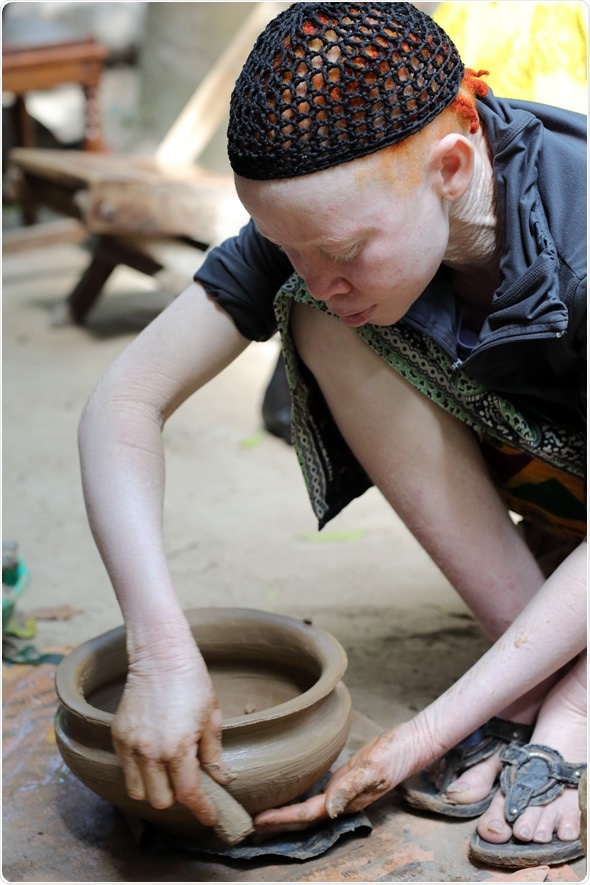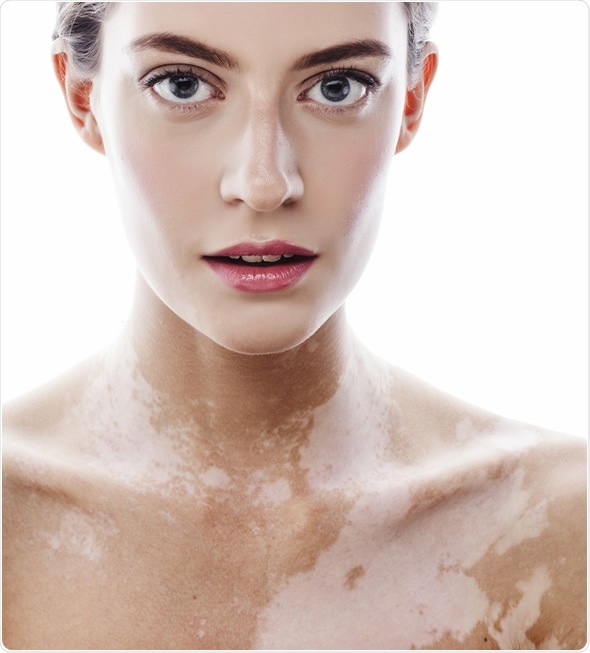The color of the human skin is due to a brown pigment called melanin. Pigmentation or coloration of the skin is dependent on the amount of melanin present in the skin. People with pale skin produce very little melanin and people with darker skin produce higher amounts of melanin. Pregnancy and sun exposure can also make skin darker, while infections, burns, and blisters can make skin lighter.
Skin pigmentation disorders affect the color of the skin. In some cases, the cells that produce melanin – melanocytes – become damaged, thus affecting melanin production. Some disorders affect the entire body while others affect only patches of skin.
Pigmentation Disorders
Skin pigmentation disorders can be localized or widespread and the changes they cause to the skin are broadly classified as depigmentation, hypopigmentation, and hyperpigmentation.
- Depigmentation is due to the loss of pigment, which makes the skin lose its natural color. Pigment loss can be partial or complete and temporary or permanent.
- Hypopigmentation is caused by a very low amount of melanin being produced by the cells and it makes the skin lighter than normal. Apart from primary pigmentation disorders, hypopigmentation can also result from injuries to the skin such as burns, ulcers, chemical exposure, or skin infection.
- Hyperpigmentation is a result of the production of very high amounts of melanin by the melanocytes, making the skin darker than normal. It can also be caused by other pigmented substances, drugs, or sunlight exposure.
Skin Conditions Related to Pigment Disorders
Some major skin diseases caused by pigment disorders are:
Albinism – is a rare genetic disorder which causes partial or total melanin deficiency in the skin. People with albinism are called albinos and typically have pale skin, white hair, and pink eyes. Most albinos are sensitive to sunlight exposure, have vision issues and are at a very high risk for skin cancer.

Melasma – is characterized by symmetric, dark brown patches of melanin on the face. Hormones and oral contraceptive pills are the main causes of this disorder. Melasma occurring during pregnancy is called the mask of pregnancy.
Acanthosis nigricans – is a condition causing dark, velvety coloration in folds and creases of the body. The affected parts of the skin can also thicken. Parts of the body that are commonly affected by acanthosis nigricans are the armpits, neck, and groin.
Xeroderma pigmentosum – is a rare genetic condition that can affect all ethnic groups. People with this condition are extremely sensitive to the ultraviolet rays in sunlight. Sun exposure causes severe burns to their skin leading to skin changes such as irregular dark spots, very dry skin, rough growths called solar keratoses, and even skin cancers.
Incontinentia pigmenti – is an inherited skin pigmentation disorder associated with abnormalities of the skeletal system, teeth, central nervous system, and eyes. It is caused by mutation to a gene that belongs to a group of genes causing neurocutaneous disorders. This condition is more common in males than females and causes discoloration of the skin due to excessive melanin deposits.
Vitiligo – is a disorder causing smooth, white patches in the skin and is a result of loss of melanocytes. The white patches are highly sensitive to sunlight exposure.

Pityriasis alba – is a very common condition affecting the skin. It is characterized by red, scaly patches that cause hypopigmentation or lighter colored skin. This condition is believed to be a manifestation of atopic dermatitis, another disorder affecting the skin.
Lentigines – are also called liver spots, and are flat, benign lesions appearing in the sun-exposed parts of the body. The dark-colored lesions are irregular in shape and are a result of high amount of melanocytes in the superficial skin layers. These lesions are more common in the middle-aged and elderly population. The face and back of hands are commonly affected by this condition.
References
- https://www.nlm.nih.gov/medlineplus/skinpigmentationdisorders.html
- http://www.merckmanuals.com/home/skin-disorders/pigment-disorders/overview-of-skin-pigment
- http://www.hopkinsmedicine.org/healthlibrary/conditions/dermatology/skin_pigment_disorders_85,P00304/
- http://rarediseases.org/rare-diseases/xeroderma-pigmentosum/
- http://www.cc.nih.gov/ccc/patient_education/pepubs/xp7_17.pdf
Further Reading
- All Skin Pigmentation Content
Last Updated: Feb 27, 2019

Written by
Susha Cheriyedath
Susha has a Bachelor of Science (B.Sc.) degree in Chemistry and Master of Science (M.Sc) degree in Biochemistry from the University of Calicut, India. She always had a keen interest in medical and health science. As part of her masters degree, she specialized in Biochemistry, with an emphasis on Microbiology, Physiology, Biotechnology, and Nutrition. In her spare time, she loves to cook up a storm in the kitchen with her super-messy baking experiments.
Source: Read Full Article
